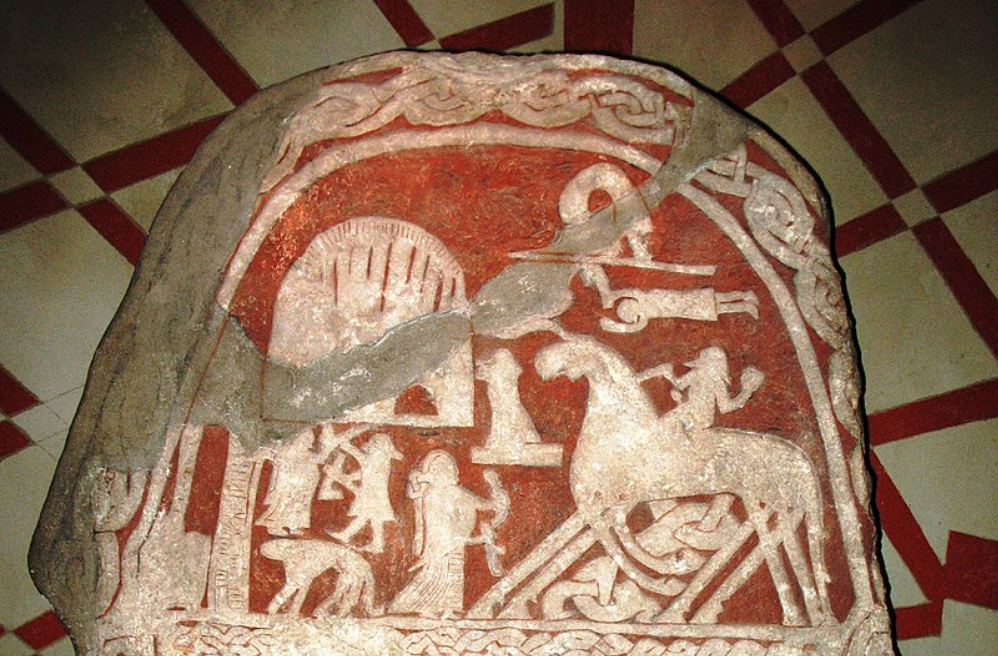Viking Picture Stones Explained (Part 1 of 2)
The legacy that the Vikings left us is not only the artifacts of Viking ships or axe but also pictorial and literal sources. Such priceless traditional materials can give us a vivid account of what happened during the Viking age, especially the Viking belief in Norse Pantheon. Indeed, we might catch sight of many Viking picture stones but surely we find it hard to understand what is portrayed on the stones. Fear not because this blog post will briefly explain the meaning of Viking picture stones.
Andre Image Stones
Discovered at Andre Church located in Andre, Gotland, Sweden, the Andre Image Stones are the collection of magical Viking rune and image stones. Andre Image Stones are believed to date back to around 8th century and 11th century. Before the significance of the Andre Image Stones is brought to light, they were often used as materials in roads or bridges construction. The image stones were finally found when the Andre Church experienced the restoration project around 1900s. The stones are now preserved at the Swedish Museum of National Antiquities in Stockholm.

Andre III
The largest and most famous stone is the Andre VIII stone. The lower part of the stone depicts scenes from Norse mythology: the saga of the waylay of the smith, Thor fishing Jormungand, the capture of Lokin in the form of salmon, Loki's punishment.
Thor went fishing Jormugand the Midgard Serpent
The upper part of the Andre VIII is believed to depict Odin on his Sleipnir eight-legged horse. The figures around Odin remain a mystery because we are not sure those are the Valkyries Odin's female helping spirit or the slain warriors who came and dwelled with Odin up in Valhalla.
Odin riding Sleipnir eight-legged horse to Valhalla in Andre III
We haven't figured out yet what is the connection between the upper and the lower parts of the stone. The two parts probably show two different motifs: the upper part depicting Odin and his Valhalla while the lower part depicting the revenge of Gods on Loki and revenge of Volund on Nidud.
Let take a look at the Andre III. The Andre III consists of serpent pattern that remains a mystery. Surrounded the serpent pattern is the runic text on the edge of the stone. The runic line reads "Ráðþjalfr and Geirnjótr, they made the good landmark in memory of ... man. Líknreifr carved the runes"

Andre III
Tjängvide Image Stone
The Tjangvide Image Stone was found on a farm in Tjangvide to the west of Ljugarn, Gotland, Sweden in 1844. It was carved on the flat piece of limestone. The stone is 1.7 meters in height and is 1.2 meters in width.

Tjangvide Viking Image Stone
If we already have some knowledge about Norse mythology and the Viking age, we can easily understand what the image stone is trying to depict. The upper part of the stone is believed to depict Odin riding on his eight-legged horse Sleipnir to enter the gate of Valhalla. Why can we know that gate belonged to Valhalla? The figures around were the hints. The woman figure right in front of the eight-legged horse is presumingly the Valkyrie who was the female helping spirit of Odin. The Valkyrie might have been holding the drinking horns offering to Odin.
Tjangvide Image Stone depicting Odin riding on Sleipnir horse
Behind her was the warriors with the axes in the hands. So, Valkyrie and warriors easily provoke the thought of Valhalla to any of us. Plus, the four-legged animal and the bird above Odin might be the guardsmen of Valhalla. Because in Norse myth, Valhalla was guarded by a big dog and an eagle.
The lower part of the stone is filled with the image of a long Viking ship. The sail spread as wide as the ship.







